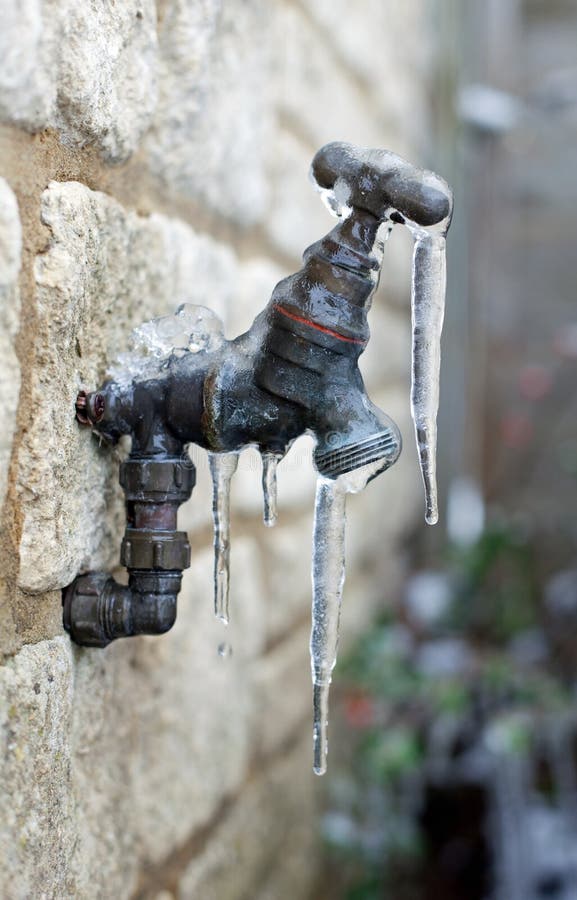Crucial Advice for Avoiding Frozen Pipes in Winter Conditions
Crucial Advice for Avoiding Frozen Pipes in Winter Conditions
Blog Article
This post which follows pertaining to Helpful Tips to Prevent Frozen Pipes this Winter is rather captivating. Don't overlook it.

Cold weather can damage your pipes, especially by freezing pipelines. Here's exactly how to prevent it from taking place and what to do if it does.
Introduction
As temperatures decrease, the threat of frozen pipes boosts, possibly leading to pricey repairs and water damages. Understanding how to stop icy pipelines is critical for property owners in cool environments.
Comprehending Icy Pipes
What creates pipes to ice up?
Pipelines freeze when subjected to temperatures below 32 ° F (0 ° C) for prolonged durations. As water inside the pipes freezes, it expands, putting pressure on the pipeline walls and potentially triggering them to break.
Risks and problems
Frozen pipelines can bring about water interruptions, residential property damage, and expensive fixings. Burst pipelines can flooding homes and trigger considerable structural damages.
Indicators of Frozen Pipes
Identifying frozen pipelines early can prevent them from rupturing.
How to determine icy pipelines
Search for lowered water flow from faucets, unusual odors or noises from pipes, and noticeable frost on subjected pipes.
Avoidance Tips
Protecting prone pipelines
Cover pipelines in insulation sleeves or use heat tape to safeguard them from freezing temperatures. Focus on pipelines in unheated or external locations of the home.
Home heating methods
Maintain indoor spaces adequately warmed, especially areas with plumbing. Open cabinet doors to permit warm air to circulate around pipes under sinks.
Shielding Outside Plumbing
Garden hose pipes and exterior faucets
Detach and drain pipes garden pipes prior to winter season. Install frost-proof spigots or cover outdoor taps with insulated caps.
What to Do If Your Pipelines Freeze
Immediate activities to take
If you believe icy pipes, keep faucets open to ease pressure as the ice thaws. Utilize a hairdryer or towels soaked in hot water to thaw pipelines gradually.
Long-Term Solutions
Structural changes
Take into consideration rerouting pipes far from outside walls or unheated locations. Add added insulation to attics, cellars, and crawl spaces.
Upgrading insulation
Buy high-grade insulation for pipes, attic rooms, and walls. Appropriate insulation aids maintain regular temperatures and lowers the risk of frozen pipelines.
Conclusion
Protecting against frozen pipelines needs aggressive measures and fast reactions. By comprehending the reasons, indications, and safety nets, house owners can shield their pipes throughout cold weather.
5 Ways to Prevent Frozen Pipes
Drain Outdoor Faucets and Disconnect Hoses
First, close the shut-off valve that controls the flow of water in the pipe to your outdoor faucet. Then, head outside to disconnect and drain your hose and open the outdoor faucet to allow the water to completely drain out of the line. Turn off the faucet when done. Finally, head back to the shut-off valve and drain the remaining water inside the pipe into a bucket or container. Additionally, if you have a home irrigation system, you should consider hiring an expert to clear the system of water each year.
Insulate Pipes
One of the best and most cost-effective methods for preventing frozen water pipes is to wrap your pipes with insulation. This is especially important for areas in your home that aren’t exposed to heat, such as an attic. We suggest using foam sleeves, which can typically be found at your local hardware store.
Keep Heat Running at 65
Your pipes are located inside your walls, and the temperature there is much colder than the rest of the house. To prevent your pipes from freezing, The Insurance Information Institute suggests that you keep your home heated to at least 65 degrees, even when traveling. You may want to invest in smart devices that can keep an eye on the temperature in your home while you’re away.
Leave Water Dripping
Moving water — even a small trickle — can prevent ice from forming inside your pipes. When freezing temps are imminent, start a drip of water from all faucets that serve exposed pipes. Leaving a few faucets running will also help relieve pressure inside the pipes and help prevent a rupture if the water inside freezes.
Open Cupboard Doors
Warm your kitchen and bathroom pipes by opening cupboards and vanities. You should also leave your interior doors ajar to help warm air circulate evenly throughout your home.

I hope you enjoyed our article about Winter Plumbing Precautions: Preventing Frozen Pipes. Thanks so much for finding the time to read our article post. In case you liked our blog posting if you please consider to pass it around. Thanks for your time invested reading it.
Request An Appointment Report this page